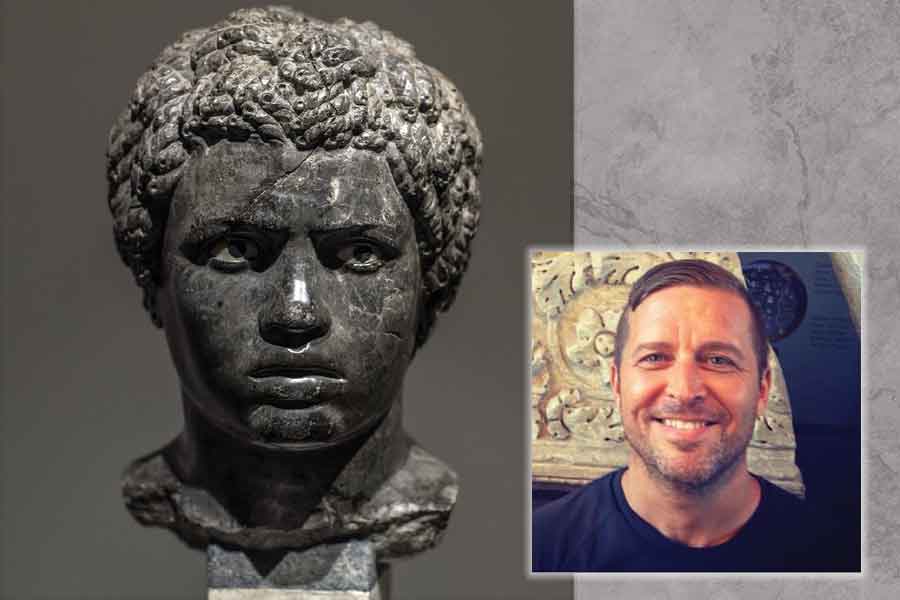States
Art History Lecture At Rice University To Explore Race, Racism, And Representation In Roman Art

Explore Race, Racism, And Representation In Roman Art
The Rice University art history lecture will examine an often-overlooked feature of Roman art racism. Northern Illinois University acclaimed art history professor Sinclair Bell will conduct the conversation. He has spent years studying Roman visual and material culture to understand foreign depictions. Bell illuminates the complex ethnicities, social hierarchies, and power structures in these creative depictions.
Bell’s talk tries to illuminate Roman art’s racial relations. Bell will explain how imperial painters depicted “Aethiopians” and “Nubians” (Black Africans) in the Roman Empire and how they defy traditional assumptions. The talk will challenge ancient art history norms by suggesting new approaches to include these representations in critical Roman art histories.
An Interdisciplinary Endeavor: Significance For Contemporary Life
The lecture’s co-host, Rice associate professor of art history and Ancient Mediterranean Civilizations Program head Sophie Crawford-Brown emphasizes its multidisciplinary character. Crawford-Brown loves the lecture’s relevance in today’s linked society. She emphasizes that we are not the first to live in a worldwide culture and that studying the ancient past is still important.
Dr. Bell studies the history of alien peoples’ visual representation. His study of the diverse and occasionally violent forms of this portrayal across millennia illuminates current race and art disputes. The lecture shows these ancient artworks are relevant to modern discourse despite chronological and cultural differences.
The Scholar Behind The Lecture
Sinclair Bell’s academic career made him an art history expert. Classical languages, ancient history, art, and archaeology were his first studies at Wake Forest University, Oxford, Cologne, and Edinburgh. He earned his classics PhD from Edinburgh in 2004.
His study is on Etruscan Italy and imperial Rome, examining family relations and racial representation. Bell’s study has deepened our knowledge of Roman art and stressed the importance of racial differences.
A stunning talk at Rice University on racism in Roman art, focusing on Black Africans, is promised. This Sophie Crawford-Brown-coordinated multidisciplinary event shows how important understanding the ancient past is in our linked culture. Art lovers, historians, and race art scholars should attend this intellectual conversation led by Sinclair Bell.
The Visual Complexity Of Roman Art
Roman art is known for its elaborate and artistically stunning depictions of race. Sinclair Bell’s Rice University lecture explores Roman art’s complex relationship between ethnicity, social hierarchy, and power. Bell explores these artworks’ meticulous elements in this investigation.
He shows how Roman images of foreigners, especially Black Africans, are multifaceted. These depictions typically reveal social dynamics, showing the variety of the peoples and their intricate connections with the Roman Empire. Bell challenges preconceptions about Roman art’s simplicity by investigating these rich visual features.
Challenges To Conventional Interpretations
Bell’s study highlights Roman art interpretation problems. Scholars have misread or overlooked many of these artworks, obscuring their racial and cultural meanings. This talk proposes novel ways to include these artworks in critical histories of Roman art to fill these gaps.
Bell challenges the audience to rethink Roman art. His research allows a broader understanding of these historical objects. This inquiry shows that reevaluating old art may improve our knowledge of the present, underlining the relevance of Roman art to race and representation concerns today.
Read Also: Soul Food Café In Bridgeport Racist Graffiti Targets
A Multi-departmental Endeavor
Rice University’s forthcoming talk shows its dedication to multidisciplinary debate. This event, co-sponsored by Rice’s Department of Art History, Modern and Classical Literatures and Cultures, Center for African and African American Studies, and Ancient Mediterranean Civilizations Program, discusses Roman art and its implications.
This collaboration shows that ancient art is studied across departments and programs. It indicates how various academic fields are committed to studying race, racism, and art history. The event represents the university’s commitment to intellectual diversity and art and cultural problems.
Roman art’s visual intricacy is explored in Sinclair Bell’s Rice University lecture, which defies standard interpretations and involves several departments. The course provides a comprehensive view of art’s role in understanding race and racism throughout history by illuminating these artworks’ minute features, reevaluating historical interpretations, and unifying academic disciplines.
Representation And Power Dynamics
The Rice University talk will illuminate Roman art’s complex representation-power nexus. Sinclair Bell’s study shows that art was strongly connected to political and social power systems. Roman art regularly featured conquered peoples, particularly Black Africans, to enforce hierarchies.
These works showed the Roman Empire’s strength and authority. Bell sheds light on how alien peoples were portrayed in this setting to support or question power structures. The lecture complicates our understanding of Roman art and its impact on society.
Ancient Art’s Contemporary Relevance
Roman art’s complexity must be considered in light of its significance today. The Rice University lecture shows that ancient art is relevant to current issues about race, racism, and representation in art. Sinclair Bell’s study shows that Roman art’s racial complexities affect modern society.
This lecture provides excellent insights into race and representation concerns worldwide. It promotes a discussion on art’s influence on cultural narratives, challenges stereotypes, and illuminates the complicated relationship between art, history, and modern society.
A Free And Inclusive Event
Rice University lectures are public and intellectually stimulating. Remember that this event is free and accessible to everyone. The university’s commitment to accessibility shows its commitment to sharing information and intellectual conversation.
Rice University invites everyone to this fascinating conversation by making the lecture public. This inclusion emphasizes that art, race, and racism should be examined together. All backgrounds may join in a thought-provoking debate about art, history, and race during the event.
Modern relevance and public accessibility are highlighted in Rice University’s lecture on Roman art’s depiction and power relations. This multifaceted approach deepens the study of Roman art and its effect on race and representation.












You must be logged in to post a comment Login